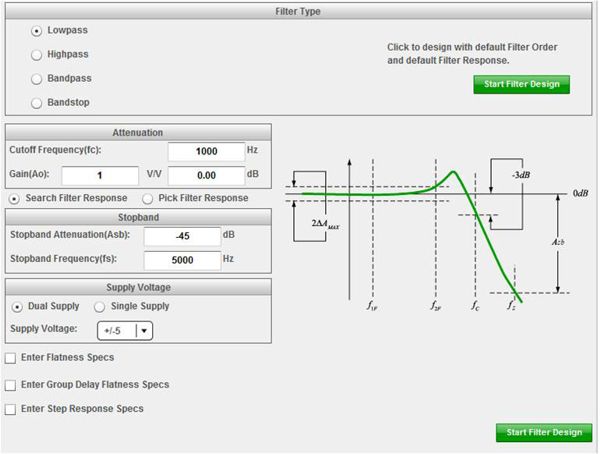Active analog filters can be found in almost every electronic
circuit. Audio systems use filters for frequency-band limit
ing and equalization.
Designers of communication systems
use filters for tuning specific frequencies and eliminating
others. To attenuate high-frequency signals, every data-
acquisition system has either an anti-aliasing (low-pass)
filter before the analog-to-digital converter (ADC) or an
anti-imaging (low-pass) filter after the digital-to-analog
converter (DAC). This analog filtering can also remove
higher-frequency noise superimposed on the signal before
it reaches the ADC or after it leaves the DAC. If an input
signal to an ADC is beyond half of the converter’s sampling
frequency, the magnitude of that signal is converted reli
–
ably; but the frequency is modified as it aliases back into
the digital output.
A low-pass, high-pass, band-pass, or band-stop filter can
be efficiently designed with the WEBENCH
®
Filter
Designer software from Texas Instruments (TI). This
application replaces TI’s FilterPro™ and the former
National Semiconductor’s WEBENCH Active Filter
Designer software. It uses the approach of these programs
and formulas verbatim when generating active filters. But
it goes beyond these two programs by allowing in-depth
adjustments to filter variables, optimizing the filter, finding
appropriate TI operational amplifiers (op amps) for the
filter circuits, and providing SPICE simulation capability.
Key design parameters for a low-pass analog filter
The frequency-domain specifications of a low-pass analog
filter include four fundamental parameters:
•
fc, the filter’s –3-dB cutoff frequency
•
Ao, the gain of the filter
•
Asb, the stop-band attenuation
•
fs, the frequency of the intercept to the stop-band
attenuation
These parameters are shown in WEBENCH Filter
Designer’s Filter Type window in Figure 1. The frequency
span from DC to the cutoff frequency (fc) is the pass-band
For more detail: Designing active analog filters in minutes

